|
As many readers know, my true family roots are in northern Delaware, the former home to my parents, grand-grandparents, and in some cases, great-grandparents. I went to kindergarten in Wilmington and recall visiting the Hagley Museum along the Brandywine River as a youngster before moving here to western Maryland after my father gained a new job at Fort Detrick. Hagley is the former industrial site of the original black powder works of the DuPont Company founded in in 1802. Today, the museum and grounds boast hundreds of stone ruins of the black powder industry, dozens of restored buildings associated with the business, and the first du Pont family home built in America. Hagley's extensive library houses a major research collection of manuscripts, archives, photographs, pamphlets, and books documenting the history of American business and technology. Now the Hagley Museum and Library wouldn't generally be my first choice for trying to educate myself on the history of brewing beer, but a recent exhibit was just the "mental elixir" I desired. The historic method of brewing of the 19th century is depicted wonderfully through an engraving entitled "View of the inside of a Brewhouse" from The Domestic Encyclopedia by A.F.M. Willich (1821). The accompanying text (for the engraving) explains how the equipment turns ingredients into beer: "The cold liquor [water] pump A, raises the water from the river or well B, which, as well as the wort pump M, is driven by a horse with proper machinery, which likewise grinds the malt used in the brew-house. The grinding house is situated between the pumps, as may be seen by the mill spout P, which conducts the malt from the mill into the mash tun H. The liquor from the river B, is pumped into the cistern or reservoir, where it is ready at all times during the hurry of brewing; and from the cistern it passes through the large pipe D, into the liquor copper, E, where it may be stopped by a cock at the extremity of the pipe. The liquor when warmed for mashing is let into the mash-tun, H, by opening the cock, F, in the bottom of the copper, and runs down the trunk Z, which carries into the raising spout, G, in the mash-tun, H, this spout by a notch in the moveable or false bottom of the mash-tun, conducts the liquor between the moveable and real bottoms, which, by ascending, assists the mashing very much. The extract or wort is let go, by turning the cock, K, into the underback, L, and is from thence carried by the horse pump, M, into a level with the wort copper, O, and runs from the pump through the pipe, N, into the wort copper. When cold liquor is required for mashing, as is the case in small beer brewing, it is obtained from the cistern, C, by the pipe, Q, which communicates with it. Thus these three very laborious parts of the business, viz. pumping the liquor from the river or well; mashing, and pumping up the worts into the copper, may easily be performed by two men; and they are able to mash a very considerable quantity of malt, and attend to the steaming of the casks, liquoring the backs, &c. between the mashes. When all the worts are in the great copper, O, and are boiled sufficiently, they are run off into the first back, T, by turning the cock, R, from the spout, W, conducting the worts from the drainer, S, which detains the hops. This back communicates with the two large backs, Y, which are sufficient to contain all the worts, and they may be laid at a greater or less depth, by using one or both these backs, stopping either of the pipes, X, by putting in one of the plugs, U. The situation of these two backs is higher than the fermenting tuns, and by pipes the worts are conveyed into them below; and if there is conveniency, the tuns, when cleansing, ought to be high enough to fill the casks in the cellar by means of a leathern pipe. 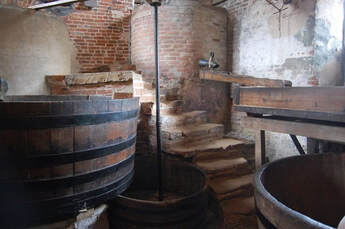 There you have it, brewing beer on an industrial level doesn't seem that hard now, does it? Well, I will say that after reading that passage, I am now doubly appreciative for the opportunity to enjoy the final product, and will leave it at that. I've visited a few modern-day breweries (Coors and Yuengling), and encourage readers interested in the process to visit some of our local breweries or chat with the many hobbyists we have in our midst as I'm lucky to have a neighbor who calls on me to be a taste-tester from time to time. As we learned last week, Frederick, Maryland has served home to local beer brewing operations since the 1700s. Makers in Frederick took advantage of a great water source in Carroll Creek, and the agricultural ingredients needed from the surrounding countryside. Brew House Alley was a name given to a narrow lane that connected West Patrick and West All Saints' streets. It slowly morphed into Brewer's Alley by mid-century. The thoroughfare would eventually be widened for two-way automobile traffic in the 20th century and eventually renamed Court Street. I briefly mentioned in part 1 of this story that the stretch of today's Court Street going from West Patrick to West Church was once the site of boisterous oyster saloons and book-ended by fancy hotel bars on each corner. These were on the east side of the street, across from a notable neighbor in the second iteration of All Saints' Episcopal Church in the middle of the block. For more about these proud "servers of beer" in Frederick's past, I invite you to read the "Story in Stone" from May, 2020 entitled "Frederick's Oystermen" (Pts. 1-3). Let's get back to brewing up more history on the beer industry in Frederick in olden days, and some of its prominent makers. We ended part 1 discussing a gentleman named Capt. William Small who operated in a space we referred to as Frederick Lot#20. This is basically the northwest corner of Court and West All Saints streets, where Asbury United Methodist Church currently stands at 101 West All Saints Street. Mr. Small had competition, and it was literally within arms reach from his location on Carroll Creek. John G. Lipps John George Lipps was born on November 23rd, 1803 in Wurttemberg, Germany. He immigrated to America in the 1830s and reached Frederick by at least 1838, the year he married. Mr. Lipps is said to have begun his brewery around 1840 and was appointed a justice of the peace in 1846. John G. Lipps opened his brewery on West Patrick Street, utilizing the former operation of George Gelwick. This was next to a popular hotel/saloon called the Black Horse Tavern, run by Jacob Schmidt at one time. Apparently, Lipps' Brewery would be facilitated by the purchase of the Steiner family's property named Long Acre. John G. Lipps married Catherine Ritchie (who was related to the Ritchie family of Maryland that would produce a future governor, which, in turn, would lead to the naming of a highway). The couple would have seven children. The Lipps brewery was successful with peak production around 700 barrels. As mentioned earlier, the firm's main competitor was only about 100 yards away down Carroll Creek in the form of a brewery owned by Jacob Markell on the corner of Brewer's Alley and the All Saints' streets . We have a rare photograph that includes an image of the Lipps' Brewery in 1868. This was taken by early Frederick photographer Jacob Byerly at the time of the Great Flood of '68. The photo is a view looking westward on West Patrick Street around the area of the famous bend. The brewery, and several homes in this vicinity were heavily damaged by the freshet which caused Carroll Creek to swell far beyond its boundaries. 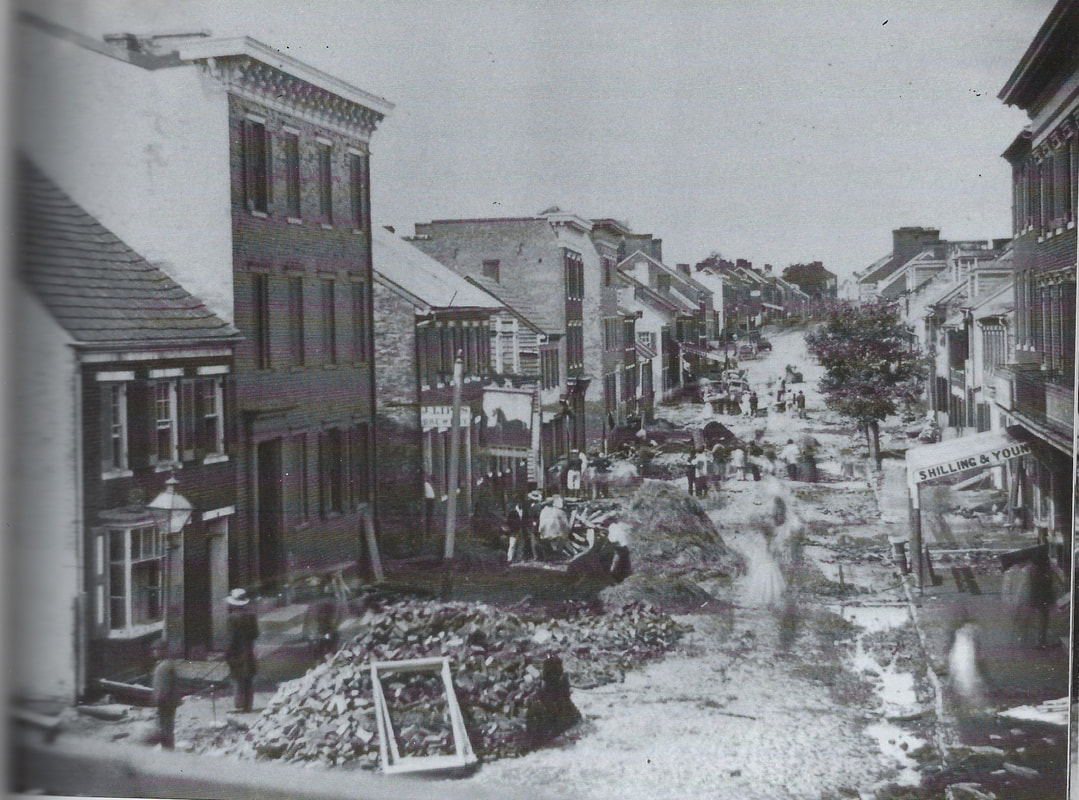 Jacob Byerly's photo of the Great Flood of '68 looking west on West Patrick St. Note the "J. Lipps Brewery" sign on the third building from the left. The second building from left is the famed "Black Horse Tavern." Note the sign complete with black horse. These properties today comprise part of the footprint of the City of Frederick annex and Patrick Street parking deck to the immediate west of the Frederick County Court House. As we have seen the unique connection between brewery and saloon and tavern, with the latter being the point of chief public connection to the product, Mr. Lipps purchased another tavern called the Globe Hotel. This was located on East Patrick Street and had a unique historic significance to town. When he came of age, John G. Lipps' son, John A. C. Lipps (1842-1923) assisted his father in the family business. Brothers George C. Lipps and Ritschy Lipps would follow when they each came of age in the 1870s. Eventually the firm would move away from brewing around 1881 and the death of John George Lipps. The J. Lipps Sons company now focused their energies on becoming a distributor of other beers from Baltimore and Philadelphia. The brewery property sat unused for years until being sold out of the family in 1904. Jacob Markell Jacob Markell (1786-1867) was a noted Frederick businessman who purchased the brewery and land here on Lot#20 in 1852 from Capt. William Small’s estate. Few details are known about Mr. Markell heading up the brewery operation, as he would have better success with his dry goods mercantile business on West Patrick Street. One day I will tell you about his son Fred and daughter-in-law Catherine Susannah (Thomas) Markell, and their interesting connections to the American Civil War. Speaking of wars, Jacob Markell was a veteran of the War of 1812, and was regarded as one of Frederick's most-respected citizens. He experienced considerable success in the realm of land investment with his “Markell’s Addition,” platted in 1856, and representing the largest extension of residential development along South Market Street during the 19th century. This came from a two-and-a-half acre farm located across South Market Street from the Frederick Hessian Barracks property destined to become the MD School for the Deaf. In regard to real estate in the immediate vicinity of Markell's brewery, the extensive leather tannery of Gideon Bantz (1792-1854) stood across the creek to the north. Mr. Bantz's father had built the built a stone warehouse here around 1797, and it would eventually become part of a tanning operation t hat helped produce over 100.000 sides of leather in 1853 with five other firms of the same ilk in town. Gideon Bantz also purchased the old Brother's Tavern on the corner of West Patrick and Brewer's Alley. It would serve home to Mr. Bantz but after his death in 1854 would eventually be used for a place of traveler lodging again. It would be expanded into a luxury accommodation known now as the Central Hotel. I discovered an advertisement of it being for sale in 1857. In the same edition, I saw another advertisement for an auction of personal estate items being held at the brewery site. Jacob Markell was appointed commissioner of the Frederick Female Seminary in 1856. Perhaps this pursuit pulled him away from giving the brewery his undivided attention? He would lease (and later sold) the brewery property for $2,750 to Peter Baer, a German who came to Frederick to hone his craft utilizing the magical waters of Carroll Creek. Peter Baer Peter Baer was born in Weinheim Germany, on Christmas day 1822 on his family's farm. His parents were vintners and he graduated from Weinheim City College in 1844. Bear decided to try his fortunes in America. The young man would eventually settle in Pennsylvania, living with an uncle. He honed his family skills in brewing by working at the Washabaugh Brewery in Chambersburg, PA, learning everything he needed to know to start his own brewery operation. By 1857, Peter Baer partnered with a gentleman named Peter Middlekauf in Hagerstown. He would save up enough money in that first year to purchase the Markell Brewery in Frederick. Recognizing the outdated condition of the plant, Mr. Baer updated his operation with “first class machinery.” He would run his brewery here for the next 15 years and expanded along the way, hiring two full-time employees, building a new beer cellar (1865) and pumping out more than 800 barrels per year. He quickly eclipsed the neighboring Lipps Brewery in production and did this with fewer employees. The expansion was a great achievement, especially following the hardships of the Civil War on the community. However, the new beer cellar project came with a tragic episode that was recorded by Jacob Engelbrecht in his diary with an entry made October 23rd, 1865. "Dreadful accident-This afternoon about 4 o'clock an accident occurred by which two men were killed, viz Theodore Kreh & Sebastian Exner, They with 3 others were digging & walling up a beer-cellar for Mr. Peter Baer (Brewer's Alley). As they were at work it caved in & two were instantly killed & the other three were also injured." Peter Baer would follow Mr. Markell’s lead and invested in real estate. He would purchase homes and lease them to German immigrants in Frederick. Mr. Baer would eventually turn his full focus toward this endeavor, and give more time to his French wife Salome and their four children. In an 1874 Frederick City Directory, Mr. Baer is listed as a "capitalist." Meanwhile, a German-born Baltimorean named Louis Heise is labeled a brewer, as he had taken over Mr. Baer's establishment on Brewer's Alley through lease agreement. Well, as you can see, Mr. Heise could not sustain the business, defaulting on his mortgage to Peter Baer. I wonder if this was an effect of the economic recession that occurred in the country at the time, triggered by the Panic of 1873 and lasting until 1878/79. I found Louis Heise back in Baltimore in an 1878 Baltimore City Directory, His occupation, as printed therein, simply read: "Beer." Peter Baer sold the brewery property on Lot #20 to Paul Hauser in 1879 for $6,000. Nine years later in 1888, at the time of his death, Mr. Baer was described as “one of the best known and wealthiest German residents of the city” and worth about $30,000. Paul Hauser Paul Hauser came by way of success in Wisconsin, and was arguably the most successful brewer in the history of olde Brewer's Alley of the 18th and 19th centuries. I immediately wanted to learn more about him and a Google search led me to a website entitled Wisconsin Breweries and Brewpubs. Within this site, author Doug Hoverson recounts the history of beer and brewers in an annotated online companion to his printed volume The Drink that Made Wisconsin Famous: Beer and Brewing in the Badger State. Mr. Hoverson includes a page of his research on our transplant Paul Hauser. Apparently Hauser was living in a place called Taycheedah as early as 1855, which is east of Fond du Lac on the southern shore of Lake Winnebago and about 60 miles southeast of Green Bay. He, too, was a native of Europe--Switzerland to be exact. Mr. Hauser's wife, Johanna, was Prussian.The couple had their first son, Louis, in Wisconsin around 1856, the same year Mr. Hoverson believes that Hauser came to the Fond du Lac vicinity. He is said to have operated a brewery here from 1858 to the latter part of the 1860s. He eventually took on a business partner and would also operate a lager beer saloon, having built another brewery that continued operation into the 1870s. The Hauser Brewery would experience a devastating fire in 1872. Financial problems in rebuilding would follow, coupled with the recession of the decade (as was the case of brewer Louis Heise here in Frederick at the same time). Mr. Hauser would be forced to turn the operation over to a former sales agent "as a cover" in an effort to disguise mounting debts. He would sell his brewery the following year in 1878. The Hauser family then moved to St. Paul, Minnesota, where Mrs. Hauser would die in 1883, perhaps prompting a change of scenery for her widowed husband.  These vintage photos appear on the Fond du Lac Historical Society's Facebook page. These are the ruins of the storage caves in Taycheedah, WI once used by Paul Hauser's brewery operation. These put in to perspective the size and scope of what Peter Baer had built here in Frederick when disaster struck upon the collapse that killed two workers. One way or another, Paul Hauser came to Frederick, Maryland after purchasing Mr. Baer's former brewery on Brewer's Alley. Hauser was able to make a fresh start here and was responsible for substantial expansion of operations. In 1883, Hauser built a bottling house opposite the brewery. The next year he purchased additional property about two blocks south of the brewery towards Mount Olivet which contained the “old Mullinix pond” for $725. This was located near the intersection of today's Broadway Street and Lee Alley. He wanted this for the purpose of providing enough ice (during the winter) to supply the brewery during the summer. Hauser employed a crew of men to drain, and expand, the pond and construct a “fine ice house” on its banks. With another ice house at the brewery and other ice dealers in the blocks between there and Hauser’s own pond, it is easy to see why part of a Frederick thoroughfare originally known as Mantz Street, (then changed to Brewers Alley), was finally renamed Ice Street around this time.  1887 Sanborn Insurance Map also shows Hauser's Pond, built by (and named) for Paul Hauser. It was once located roughly 100 yards from Broadway Street's intersection with W South St. Today it serves as a drainage overflow pond as can be seen in the photograph below. (Looking south on Broadway St with former site of Hauser's Pond and Ice House to the right, and Mount Olivet Cemetery's side gate at the end of Broadway to the left.) In her book Beer in Maryland: A History of Breweries Since Colonial Times, author Maureen O'Prey writes: "The plant was constructed in extremely close quarters and expansion was not a viable option for Hauser or any of the brewers occupying that location. Hauser initially brewed ale and small beer and eventually added lager beer to appeal to a wider audience influenced by the nearby breweries in Baltimore and Cumberland. At his peak, Hauser produced just under 500 barrels per annum, enough to survive but not enough to thrive; the brew was supplying his saloon but not much beyond that. He was paying out $1,000 in wages per year for four employees to work twelve-hour days in 1880. This was indicative of two things. First, there was no union forming in Frederick at the time; and second, considering the value of his brewery matched the investment, he was losing money or breaking even annually. He gave up the plant when his health deteriorated."  1887 Sanborn Insurance Map with detail showing the scope of Hauser's Brewery on the west side of Brewer's Alley with All Saints' Street to the left. (Note: The Order of Nazarites building was also known as the home to the Black Knight's of Pythia (aka Pythian Castle) and still stands today as a private residence fronting All Saints St.) In 1885, Hauser continued improvements to his brewery and saloon with the goal of providing 75 barrels of lager to his own customers and to country saloon keepers. It was reported that the “picturesque old house in which Mr. Hauser does business [was] rapidly being modernized by the carpenters and painters.” Additionally, it was also reported that Hauser was constructing a “Bier Halle” with a “bier garten” adjoining “so that customers may sip their lager in the summer evenings under the influence of the murmuring waters of Carroll Run or the enlivening strains of a band, as may suit their fancy.” Despite the tranquil words describing the beer garden, it’s hard to imagine this as a peaceful setting, given that it was adjacent to a large tannery and the heavy industrial setting of the creek. It wasn't all romance and big bands along Carroll Creek at the Hauser Brewery as the article below attests to feats of strength, or stupidity, sometimes accompany beer drinking. We've established that Paul Hauser offered variety and his brew could be guaranteed ice cold, as he had the (Ice) house, pond and street to prove it. It appears that he made the decision to sub-let his saloon and beer garden to a new owner. This could have been due to health reasons, and/or a desire to go back north to aid his son in the operation of a successful malt brewing works in St. Paul. As a final touch here in Frederick, it seems that all he needed to compete with leading breweries of the period like Anheuser-Busch (founded 1852 in St. Louis) were those darn Clydesdales, right? Mr. Hauser came back to Frederick and may have just given up the brewing aspect of his business. He would reconfigure his ice house, next to Hauser's Pond, to include a bottling works. It also appears that he had the semblance of a saloon at this location but I'm not quite sure the chronology of this work. He bought the Black Horse Tavern on West Patrick Street in 1890 and renamed it "The Eagle." At this time, he rented out his "commodious" house on West Patrick Street and soon after took up partial residence in Baltimore. He remarried and had definitive business ties to an enterprise called the Globe Brewery in Charm City. Hauser continued to maintain dual residences, and frequently traveled to Frederick to visit friends and keep an eye on his holdings from gleanings I saw with newspaper mentions. Although not thought to be brewed here, he would have a hand in supplying (and bottling) his beer choices here. An unfortunate event happened to Mr. Hauser in early April, 1898 that would make front page news both here and in Baltimore. This seems to be the proverbial "straw that broke the camel's back," putting Paul Hauser out of the beer production game, and Frederick as well. In the 1900 US census, Paul Hauser is listed as a saloon operator. He would live out his life in Baltimore, dying in 1915. It was certainly a career in beer to drink a toast to. Christian Eckstein Christian H. Eckstein was included in an article I wrote last year, but I'd like to share a portion with you here. He purchased the star of our story, the Lot #20 Brewer's Alley brewery property, at tax sale in 1889. Another native German, Christian was born on October 22nd, 1822 in Dernichein in Hesse-Kassel, Germany. He emigrated to America with his wife and first came to Baltimore, where he worked as a milkman. He came to Frederick in 1854 and began operating taverns here. I learned that he may have started at the noted Dill House that once sat at the corner of West Church and Court Street. I did an earlier story on the origins of this location, now represented by a stellar, macadam parking lot serving the Paul Mitchell Temple and M&T Bank. Eckstein had opened his own bar by 1862, which would take his name. This was located on the northwest corner of North Market and third streets. This location at 301 North Market Street, also doubled as his home residence as far as I could tell. 301 N Market Street was once the site of Eckstein's Saloon, and is today known as the Up on Market restaurant. It would remain in the family until 1893. Diarist Jacob Engelbrecht notes the following event in his diary on July 14th, 1862: “Lager beer saloon—Mr. Christian Eckstein, who keeps a lager beer saloon at the corner of Market and 3rd Street, was called on by the Provost Marshal & his posse with a wagon, & took 21 kegs of lager beer other article in his line. Government reason, selling liquor to the soldiers. This happened on Saturday evening last 12th instant.” The war came and went, and I’m sure Mr. Eckstein sold plenty more alcohol to the various soldiers of both armies who visited our city along the way. Weeks after the surrender at Appomattox in April, 1865, Christian Eckstein embarked on a sojourn back to his native homeland (Germany) accompanied by a friend and fellow resident named Jacob Schmidt, who kept the Black Horse Tavern mentioned earlier in conjunction with a variety of brewers and located on the famed bend in the second block of West Patrick Street. They left town by train on May 15th and returned on August 30th after a pleasant trip. In addition to slinging beer, Mr. Eckstein was an avid marksman. Jacob Engelbrecht makes mention Herr Eckstein again in reference to an interesting purchase of land on Fredericks’ northwest side: “Deutsche Scheutzen park—This park adjoining our city was sold at public sale on Saturday last March 12, 1870 to Christian Eckstein for fifteen-thousand one hundred dollars ($15,100). It contains 28 and ½ acres of sand and was formerly part of the farm of Mr. Stephen Ramsburg but lately to Doctor William Tyler from whom the “Scheutzen Gesellschaft” purchased it.” For quite sometime, I have had a particular interest in this curious organization of German origin. I first stumbled upon the Deutsche Sheutzen Gesellschaft in the context of local, German Civil War soldier Joseph Groff. His name would be applied to Groff Park which was synonymous with Frederick Scheutzen Park. You know this locale better today as the campus of Hood College, northwest of Frederick’s downtown center. The meeting lodge of this group still survives today as Brodbeck Hall, keeping its German name after all these years. Christian H. Eckstein sold the brewery on Brewer's Alley less than two years after buying it in 1889. The purchaser was a man named John Kuhn whose investment cost him around $10,000. No deed exists for the transaction as it is assumed that Mr. Eckstein would hold a mortgage over the property which included all barroom fixtures, a horse, two beer wagons, 2 sets of harnesses and all the ice on the premises, including that in Mr. Hauser's ice house down on Broadway Street. John G. Kuhn The old brewery address was 58 Brewer's Alley. Today one can find a small bronze plaque (in the plaza area by the creek) that pays homage to the processes, equipment and workers that comprised Frederick's beer-making industry here. The plaque includes a quote from a gentleman known more for his knowledge, research and writings on Frederick's pre-history than the town's relationship with the brewing and spirits industry. His name was Edward Ralston Goldsborough, and I wrote a "Story in Stone" about his life story back in April of 2020. While Ralston preferred finding Native-American spearpoints and pottery shards at various locations throughout the county in the late 1800s and early 1900s, he was mesmerized by an event that had beer actually rolling down Brewer's Alley. He would spend a great deal of his life living within a block of this location and in 1944 recalled, "I remember that John Kuhn sold beer by the glass and by the bottle...One night a fire broke out and kegs of beer were rolled into the alley." John Georg Kuhn was born in Munich, Germany on November 25th, 1855. He came to America with great aspirations in 1889. Soon, he would be in Frederick, Maryland and formed what would become known as the Gambrinus Brewery, and this entity had its grand opening in 1891. His first big break came with securing the right to serve his beer at the Great Frederick Fair in 1892. It would not take long for Mr. Kuhn to get his first taste of adversity, due to an unfortunate disaster that could have been avoided had someone kept a closer watch over their children. A nearby fire started in ice houses due to kids being careless. I was puzzled just thinking about a house full of ice burning, until I found out that it was often common to pack ice in sawdust. Now there's an accelerant! I would soon learn that this incident was also a threat to my workplace of Mount Olivet as well. Combined with the fire that beset Paul Hauser's ice house five years later in 1898, it's no wonder "Fire & Ice" events seem so at home here in Downtown Frederick. John Kuhn went on to invest heavily in his new brewery property including putting in motion plans for additions of new cold storage, ice plant, engine, and updated bar room run by a Mr. Atkinson.  1892 Sanborn Insurance Map showing John Kuhn's Brewery on Brewer's Alley. Note three nearby points of interest: the bowling alley was built by Paul Hauser as part of the brewing complex and is located between the brewery proper on the west side and the Nazarite Building (Order of Nazerites). This building would later become the Black Knights of Pythia organization, and also utilized as the 15-bed Black Emergency Hospital of Dr. Ulysses G. Bourne and Dr. Charles Brooks from 1919-1928. Lastly, note the old Washington's Headquarters building, where George Washington is said to have stayed the night before meeting Gen. Edward Braddock in April, 1755. While combing through old newspapers, this article caught my attention in reference to our subject. Hindsight being 20/20, it is too bad Mr. Kuhn did not have this man in his corner as fate would eventually deal a harsh blow, Things went nicely for the remainder of 1894, 1895 and into 1896. Unfortunately, John Kuhn would lose it all in a devastating fire in May of that fateful year. As for Mr. Kuhn, he enjoyed the greatest popular success at the location, but his run was cut far too short as he would experience the greatest disaster. He would never recover financially to reopen the brewery here. It appears Kuhn held out hope, but it would not happen. To care for his family, he immediately started serving as the local representative for the fore-mentioned Globe Brewing Company out of Baltimore. I strongly sense an existing relationship between Kuhn and his predecessor Paul Hauser. In 1897, Kuhn sold the brewery property to Thomas Harwood. This unfortunate fire would mark Kuhn's endeavor as the "last call" when it came to brewing on Brewers Alley. John Kuhn would eventually continue to sell alcohol and host bowling up on N. Market Street before moving to Baltimore. Meanwhile, few attempts by other interested parties to start another brewery in town occurred in 1911 and again in 1914, but each came up short. One group was from Baltimore, and the other from Chicago. The desired location, however, was not at the creek and Brewer's Alley, but rather the abandoned factory of Calvin Page on the southwest corner of South and Broadway streets. The brewery ruins on Brewer's Alley stood for some time before several dwellings were constructed in its place. The area now constitutes part of the Carroll Creek Linear Park. According to census records of 1910 and 1920, John Kuhn was living in Baltimore and remained employed in brewing. He even got busted for serving alcohol without a license in Baltimore in 1913. John G. Kuhn died in Baltimore on March 10th, 1927. He is buried in Baltimore's Most Holy Redeemer Cemetery located off Belair Road. As time passed, the names of the many brewers of Frederick have faded from collective memory. How can they help from not being forgotten? We don't have remaining structures from their former workplaces, examples of their beer products, and local memorials to their lives (in the case of Capt. Small, Diehl, Hauser and Kuhn) in places like Mount Olivet. The name of Brewer's Alley would disappear as well. The north-south city thoroughfare would take the new name of Court Street. In the early 1920s, the humble alley needed a makeover in both look and moniker because something big was happening in the block to the north. This was the construction of a new luxury hotel, the likes of which had never occurred here before. The Francis Scott Key Hotel opened in January, 1923 and was a definitive "game changer." Business and pleasure travelers would see Frederick as a prime destination. Even the original Frederick Board of Real Estate (destined to become the Frederick County Association of Realtors) was formed in response to this impact on town. One of the organization's first major projects involved lobbying town officials to widen Court Street in an effort to proactively facilitate traffic and travelers coming to the hotel. We have alluded to it a few times already, but an equally important structure was also being built at this time on this same thoroughfare that traveled to the immediate east of the FSK Hotel. It was a block away and would be constructed on the old brewery location. Asbury United Methodist Church is a church rich in history and steeped in significance as one of the oldest African-American churches in Frederick. the congregation's roots date back to 1818 when William Hammond, a free black man, purchased a lot on East All Saints Street for $60. The church, which was known as the “Old Hill Church,” was constructed by a white congregation who permitted free blacks to worship there. In 1864, blacks came into full possession of the church, and by 1870 it was incorporated and renamed Asbury Methodist Episcopal Church. In 1912, pastor Rev. L. J. Valentine convinced the congregation to purchase the old brewery property for the new church when the lot on the corner of Brewer’s Alley and W. All Saints Street became available. By 1921, the present church structure was completed. In 1939, the church dropped Episcopal from its name and became Asbury Methodist Church. Eventually, the church would officially become known as Asbury United Methodist Church.  The Brewer’s Alley restaurant location at 124 North Market Street began serving customers in July, 1996. Best of all, beer was brewed on the premises. However, there exists a much bigger story of Frederick's past in relation to this very location. The first residents of Frederick held a lottery to raise money to build a market house on this location in 1765, which was completed in 1769. It would eventually become our first town hall when Frederick was incorporated in 1817. The structure served its dual purpose for over a century. The Market House spanned the Revolutionary War, the War of 1812, and the Civil War, including the ransoming of the city by Confederate General Jubal Early. In 1873, the bustling town of Frederick replaced the Market House with the “new” multi-functional offices, and provided space in the rear for the Frederick Farmer’s Market. Later, the rear of the building was replaced by the present parking deck, the first of it’s kind in town. As the seat of city government up through the mid-1980s, the building was witness to Frederick’s political history, and as an opera house and theater it has been witness to much of Frederick’s social and entertainment history. The building has hosted such diverse events as a lecture given by Frederick Douglass, and concerts conducted by John Philip Sousa. Other events of note included a memorial service for slain President William McKinley (1901) and a speech on trade and commerce by President William Taft (1911), the Frederick debut of D.W. Griffith’s film “The Birth of a Nation” (1915) and the Manhattan Opera Company’s production of “Madame Butterfly” (1926). Thank you to Phil Bowers and those responsible for choosing such a "stout" name for the establishment. Along with brewing their own beer for the past 27 years, we are lucky to have the tradition of beer-making here in Frederick live on as these days we have numerous firms doing so. ******************************************************************************************************************
History Shark Productions presents: Chris Haugh's "Frederick History 101" Are you interested in Frederick history? Want to learn more from this award-winning author and documentarian? Check out his latest, in-person, course offering: Chris Haugh's "Frederick History 101," with a 4-part/week course on Tuesday evenings in late August/early September, 2023 (Aug. 22, 29 & Sept 5, 12). These will take place from 6-8:30pm at Mount Olivet Cemetery's Key Chapel. Cost is $79 (includes 4 classes). In addition to the lecture class above, two unique "Frederick History 101 Walking Tour-Classes" in Mount Olivet Cemetery will be led by Chris in August focusing on interesting local, historical figures of the 1900s. These are available for different dates ( Aug. 8th and Aug 23rd) Cost $20. For more info and course registration, click the button below! (More courses to come)
0 Comments
Leave a Reply. |
STORIES
|
Archives
July 2024
June 2024
May 2024
April 2024
March 2024
February 2024
January 2024
December 2023
November 2023
September 2023
August 2023
July 2023
June 2023
May 2023
April 2023
March 2023
February 2023
January 2023
December 2022
November 2022
October 2022
September 2022
August 2022
July 2022
June 2022
May 2022
April 2022
March 2022
February 2022
January 2022
December 2021
November 2021
October 2021
September 2021
August 2021
July 2021
June 2021
May 2021
April 2021
March 2021
February 2021
January 2021
December 2020
November 2020
October 2020
September 2020
August 2020
July 2020
June 2020
May 2020
April 2020
March 2020
February 2020
January 2020
December 2019
November 2019
October 2019
September 2019
August 2019
July 2019
June 2019
May 2019
April 2019
March 2019
February 2019
January 2019
December 2018
November 2018
October 2018
September 2018
August 2018
July 2018
June 2018
May 2018
April 2018
March 2018
February 2018
January 2018
December 2017
November 2017
October 2017
September 2017
August 2017
July 2017
June 2017
May 2017
April 2017
March 2017
February 2017
January 2017
December 2016
November 2016






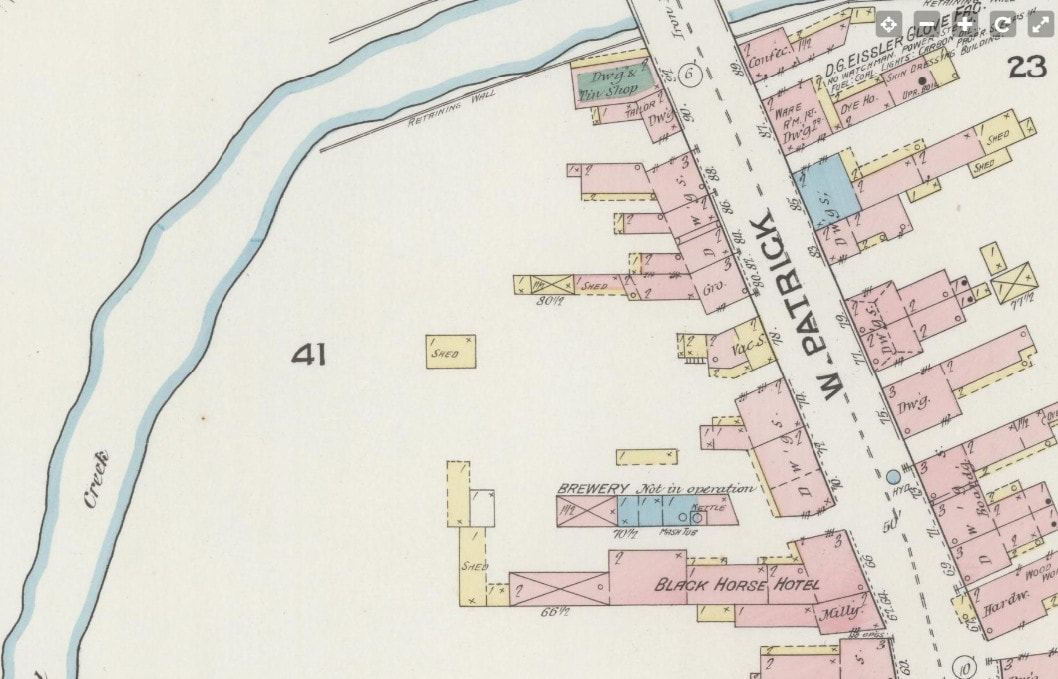

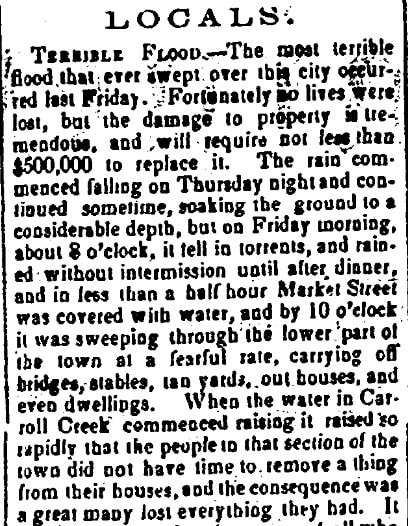



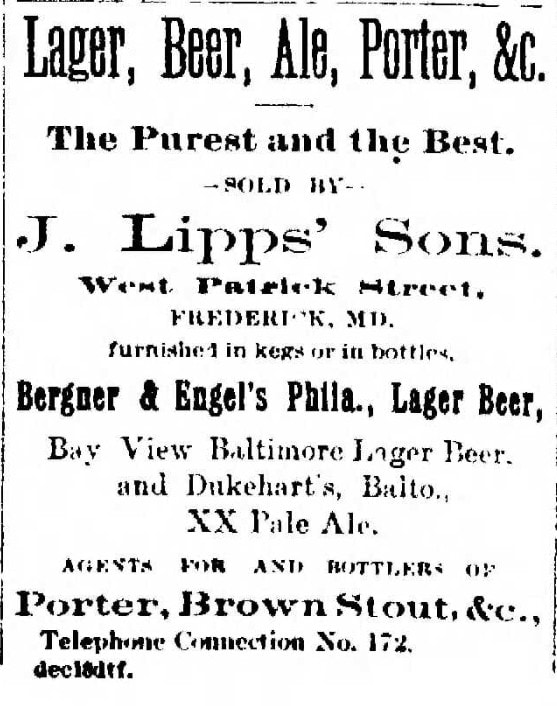
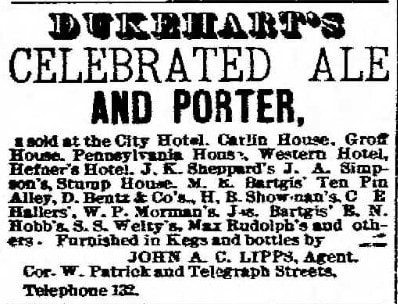






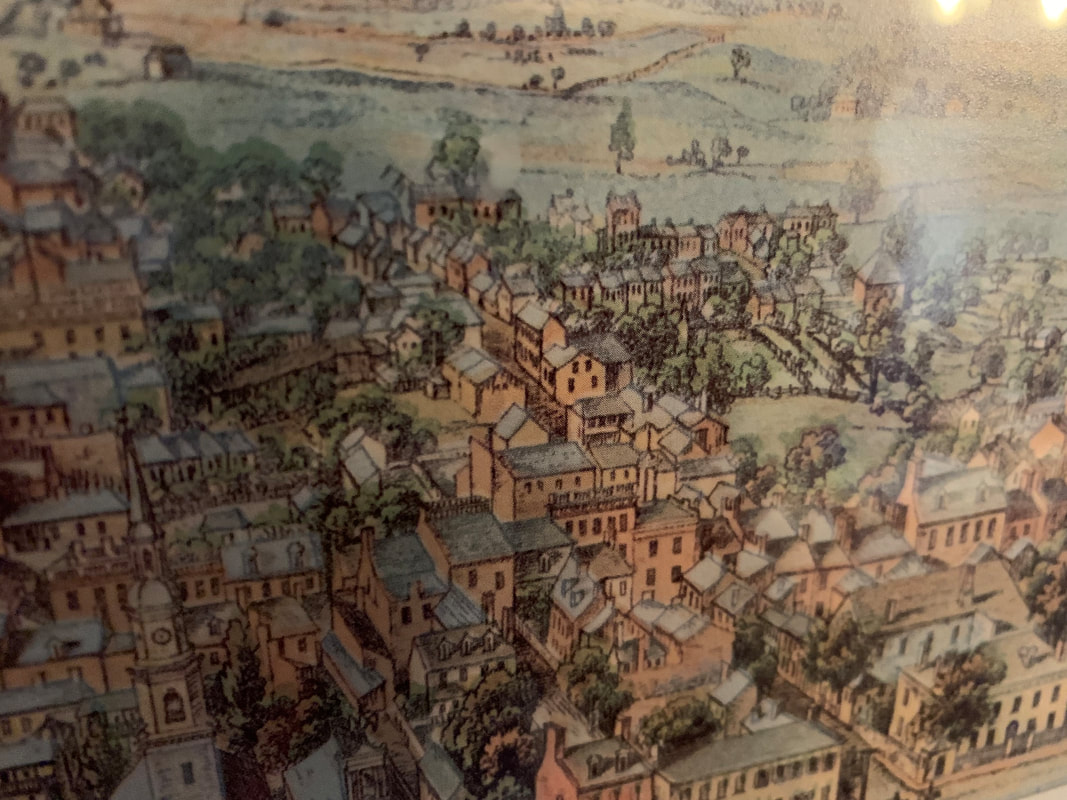







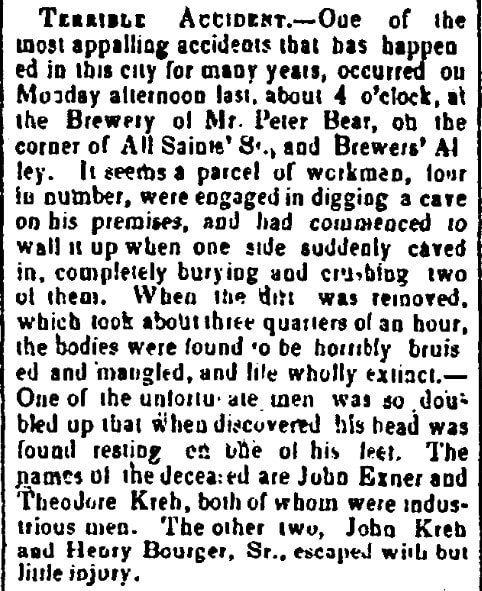



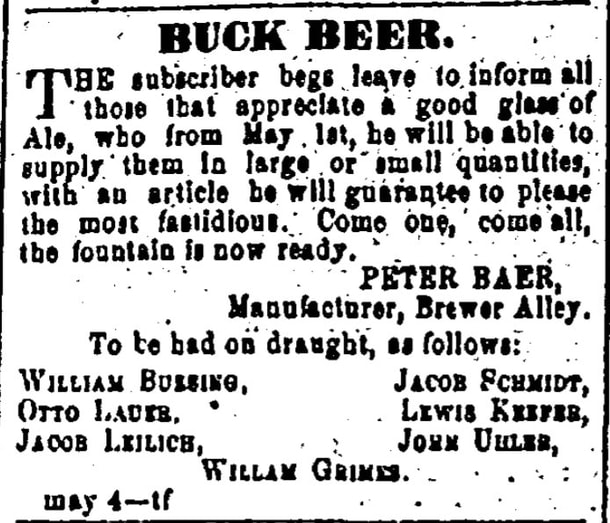

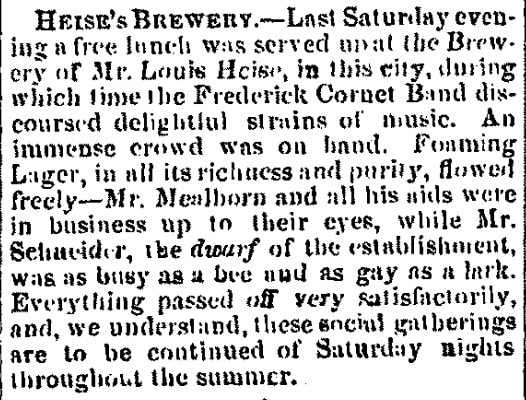




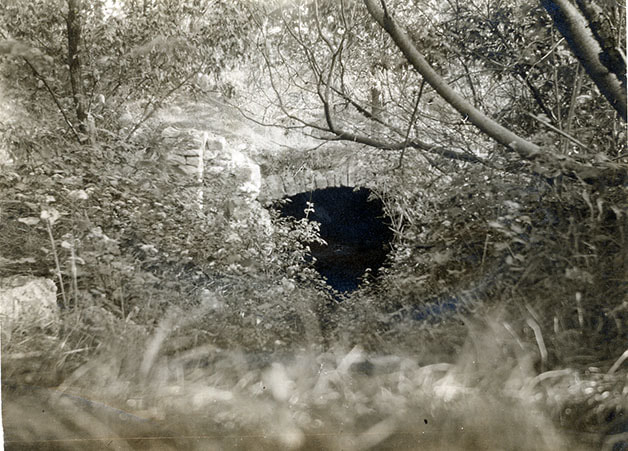




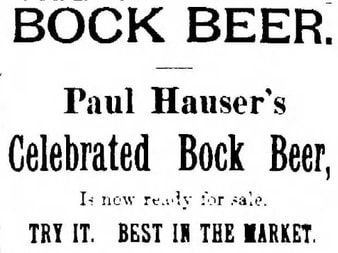

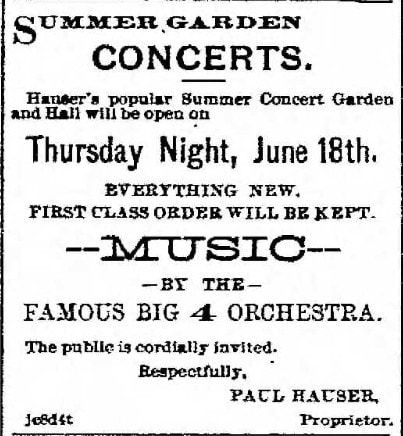






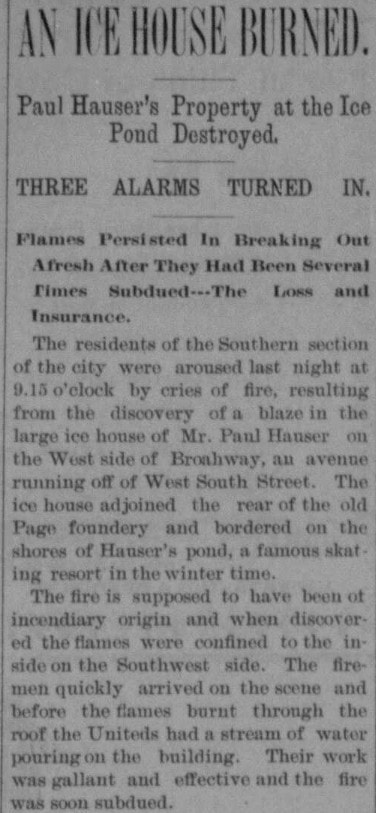


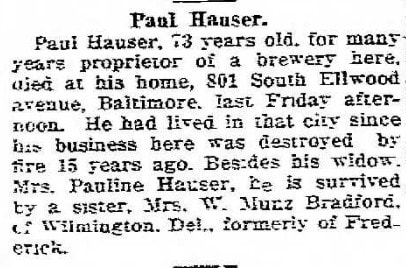

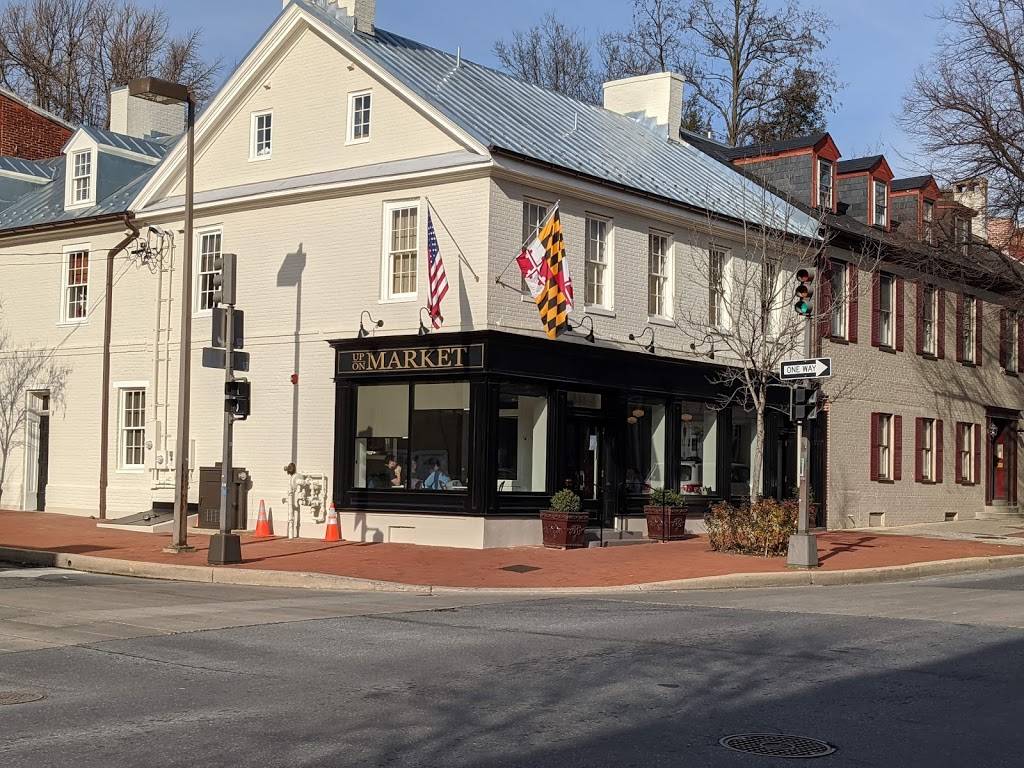


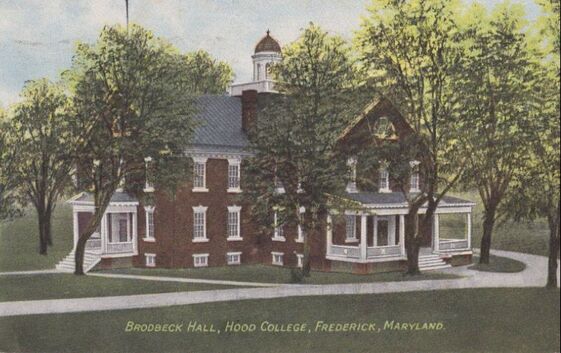









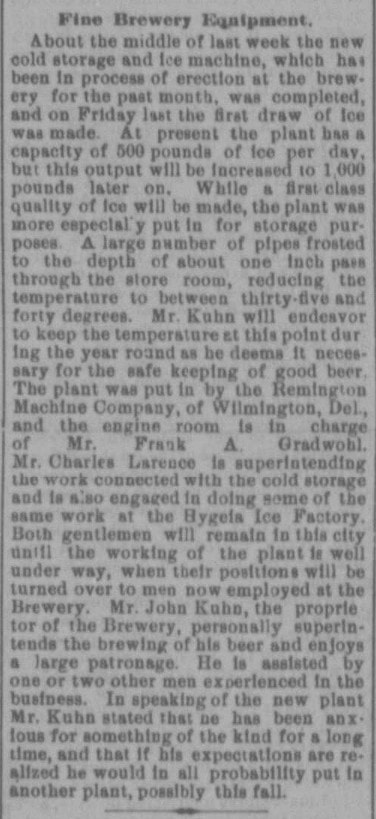






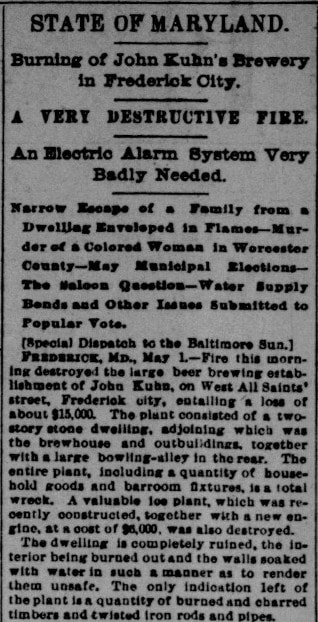




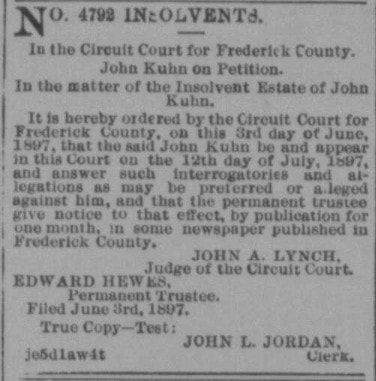












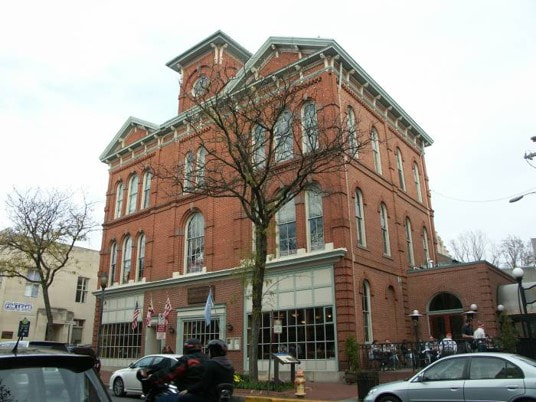
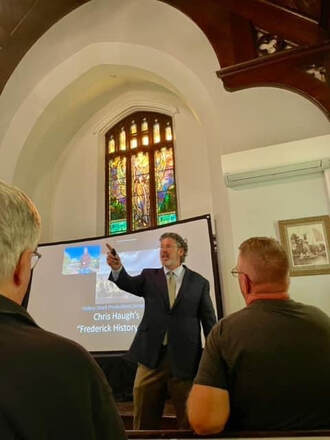
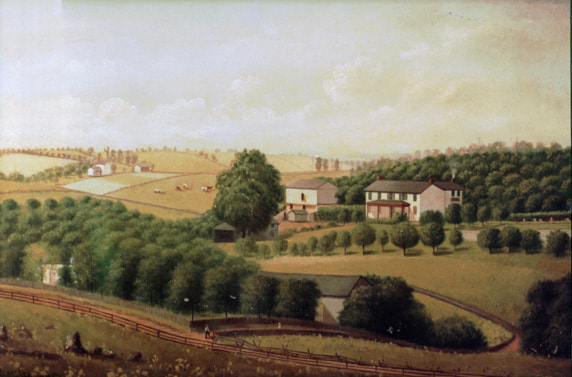

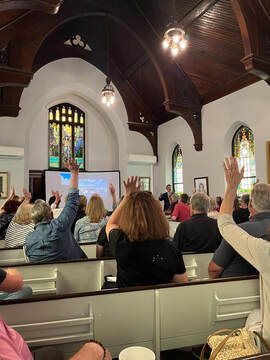

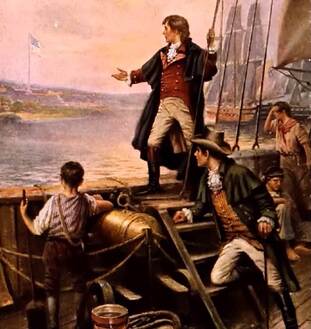

 RSS Feed
RSS Feed